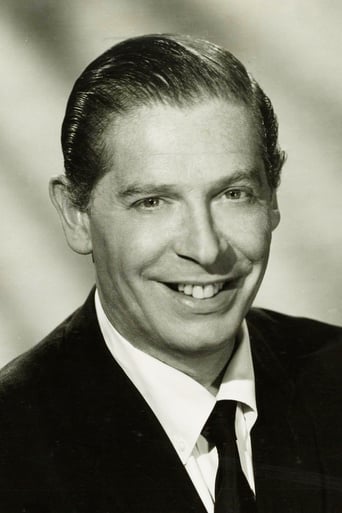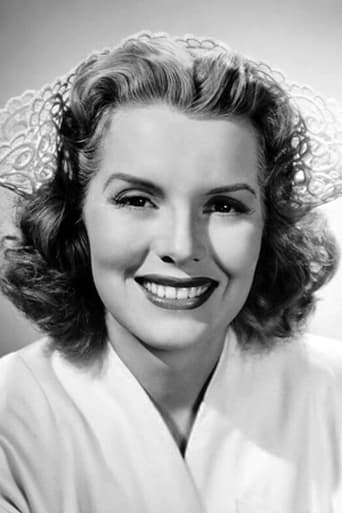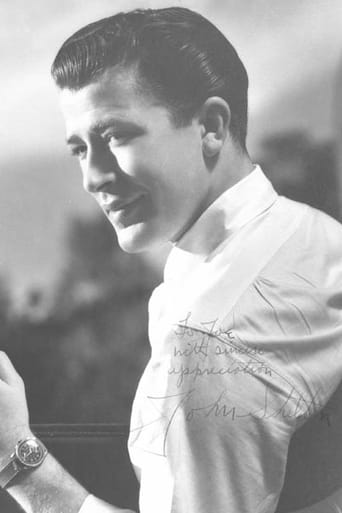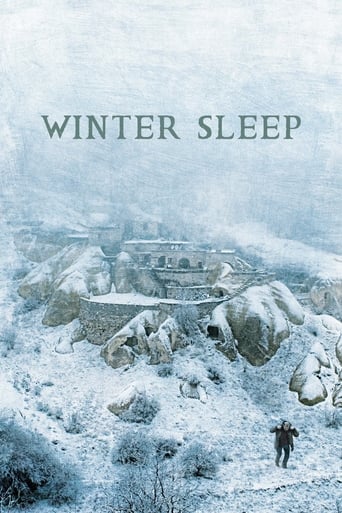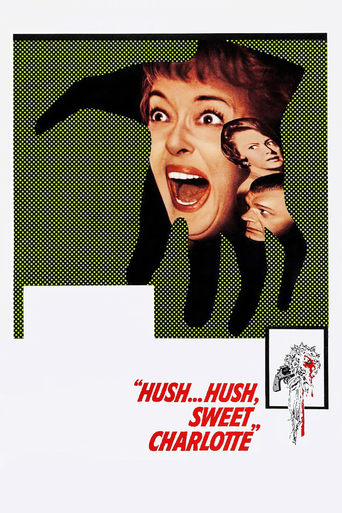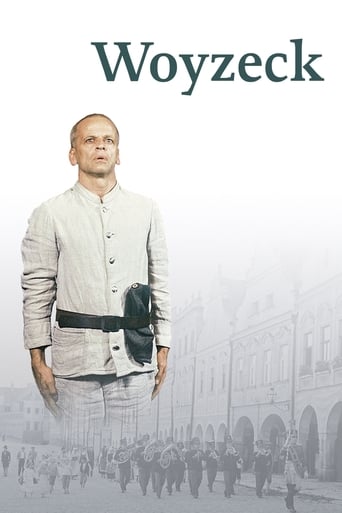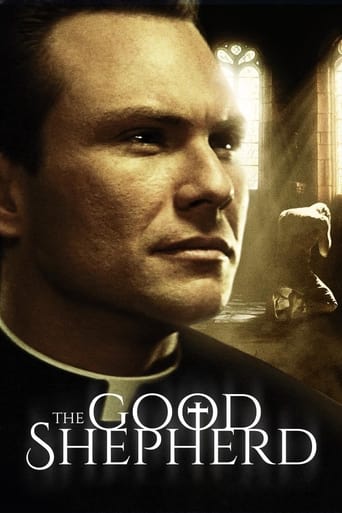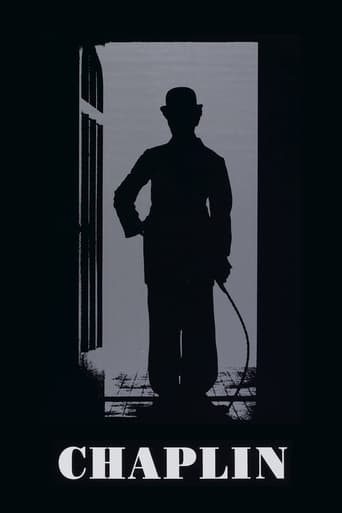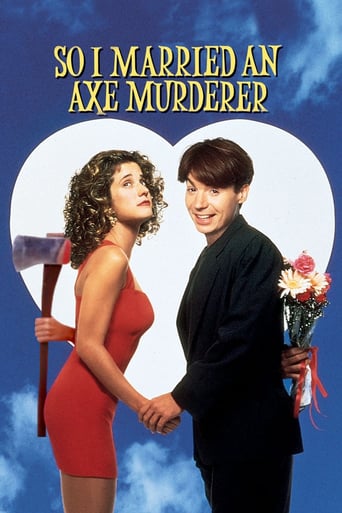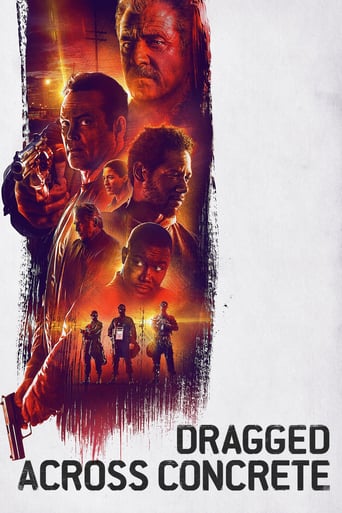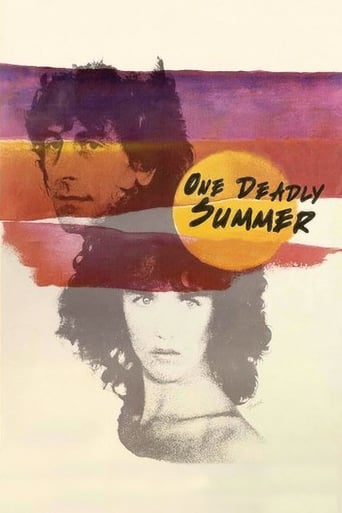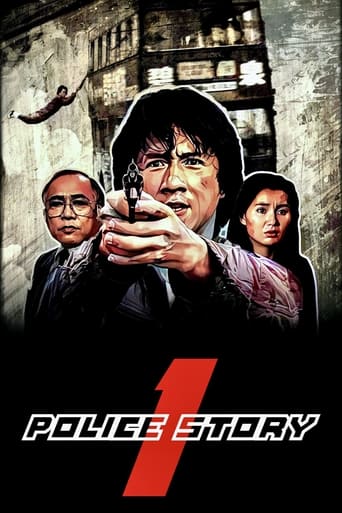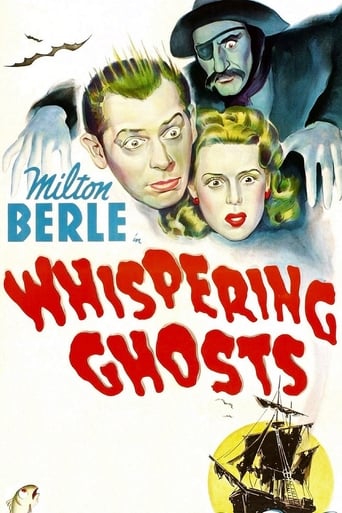
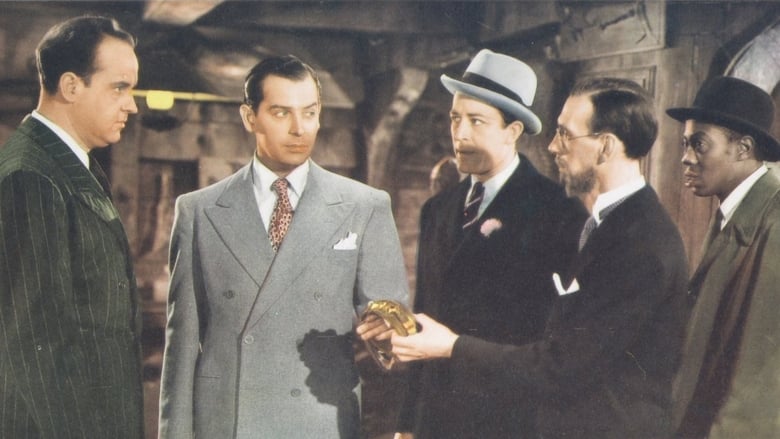
Whispering Ghosts (1942)
A detective (Milton Berle) who solves cases on the radio investigates the decade-old murder of a sea captain.
Watch Trailer
Cast


Similar titles
Reviews
Producer: Sol M. Wurtzel. Copyright 22 May 1942 by 20th Century-Fox Film Corp. New York release at the Rialto: 17 May 1942. U.S. release: 22 May 1942. Sydney release at the Civic: 7 August 1942. Australian release: 13 August 1942. U.S. length: 6,745 feet (75 minutes). Australian length: 6,948 feet (77 minutes).SYNOPSIS: Radio comic solves mystery of haunted treasure ship.COMMENT: A most enjoyable B-picture with an amusing, intriguing script, a top-flight cast and excellent production values. Milton Berle is at the top of his form and delivers the script's many wisecracks with the same brilliant timing and dexterity as he manually disarms Abner Biberman (whom he mistakenly supposes to be an actor).Speaking of actors, there are two deliciously hammy performances from John Carradine and Renie Riano which are spot on in character and reveal a range of subtlety unmarked elsewhere in their careers. Grady Sutton too for one brief flash shows an unexpected capacity to be a menacing heavy. Frank Faylen has a nice cameo as a replacement announcer (the script device that works Faylen into the plot has us puzzling for a while but it turns out to be a typically brilliant piece of Philip N. MacDonald plot construction). Milton Parsons has another of his sinister sepulchral roles which Arthur Hohl gives a typical portrayal as the harassing detective — and Harry Hayden as the harassed sponsor. We like Charles Halton's scared lawyer and Abner Biberman scuttling about in the shadows.Brenda Joyce gives an attractive performance and whilst her Herschel costumes are now somewhat dated, she still looks pretty good to us. Many of Berle's jokes are made at the expense of Willie Best who provides plenty of chuckles with his deft portrait of a cowardly valet.Alfred Werker's direction is considerably above his usual standard — the close-up on Halton as he waits nervously for the lift and glances over his shoulder will knock audiences to the back of their seats, while the tracking and panning shots with torch beams over the rotting hulk keep suspense high.The art direction is masterly and is arguably the most lavishly atmospheric ever achieved in a "B" picture and is ably abetted by Lucien Ballard's superbly calculated-for-thrills cinematography. Other production credits are A-1 and production values, even by Fox's high B-feature standards, are exceptional.
Obviously made as an attempt to cash in on similar themes (comical radio show host solves mystery), this enjoyable comedy replaces Bob Hope (who made similar themed movies with "The Cat and the Canary" and "The Ghost Breakers") and Red Skelton (the "Whistling" series) with Milton Berle whose early film career was a brief blip in his over-all list of works. He's trying to solve an old murder on a seemingly haunted ship, left to pretty Brenda Joyce by her late great-uncle whose mysterious death remains unsolved. Most of the action takes place on this ghost ship, filled with all sorts of creepy people, including two eccentric characters (John Carradine and Renie Riano) who are almost ghost-like in their creepy demeanors.Berle gets in a few good wisecracks at Riano's expense (refering to her as "Moronica Lake"), but his slurs towards valet Willie Best (obviously spoofing Eddie "Rochester" Anderson's relationship with Berle's "friendly" rival Jack Benny) are quite racist, even if on occasion quite funny. One gag between Berle and Best is obviously lifted straight from the Humphrey Bogart comedy thriller "All Through the Night", taken from a scene where Bogart's valet (Sam McDaniel) is amusingly confronted for wearing Bogart's clothes. Best takes each stereotype tossed at him in stride, making his cowardice hysterically funny even if it tears away at his dignity. While I wish these actors had been treated better in playing less dignified parts, I have to give them credit for their personal integrity in adding a soul underneath the writers' interpretations of these parts, sometimes adding in a silent look or attitude that makes their obvious intelligence come through even in spite of the deliberate slurs tossed their way.As for who the guilty party is in the gruesome murder (involving a hatchet), there are so many red herrings that it is surprising that the water surrounding the ship doesn't look like blood. One funny theory is thought of with the suicide of the victim (how does one stab themselves in the back with a hatchet? Toss it up in the air and bend over so their back will catch it?) John Shelton is wasted as Joyce's love interest who seems to be the obvious killer, while funny man Grady Sutton has some amusing lines as a milquetoast visitor on the boat who seems to really have no reason for being there. The rapport between Berle and the detective (Arthur Hohl) investigating the case is also amusing. While this is certainly an overall enjoyable comedy thriller, it is the chilling photography and eerie atmosphere which makes it work and makes it more than just another rip-off of a plot line you've seen many, many times.
1942's "Whispering Ghosts" served as a rare leading role for Milton Berle, still seven years away from TV stardom as 'Uncle Miltie,' for Sol Wurtzel's 'B' picture unit at Fox. In an obvious nod to Bob Hope's "The Ghost Breakers," Berle plays a radio sleuth, H. H. Van Buren, trying to solve the ten year old ax murder of a ship's captain who had hidden a cache of diamonds on his schooner the Black Joker. Also like Hope, Willie Best is on hand to provide wisecracks aplenty, but here, sadly, the ghosts are nonexistent. Instead, we get a pair of ham actors posing as the dead captain's first mate, Long Jack (John Carradine), and sweetheart Meg (Renie Riano), plus the captain's grand niece and heir (Brenda Joyce). The only real mystery is why nobody found the jewels before, the culprit's identity painfully obvious right from his opening scene. Carradine, Grady Sutton, and Milton Parsons are on hand to prop up the second half, as the picture remains anchored to that houseboat and doesn't budge. More serious and less cowardly than Bob Hope, Milton Berle proves himself capable of carrying a picture, though his material is substandard, his constant racial banter with Best providing the most amusement. For John Carradine, it was quite a comedown from acknowledged 'A' classics like "The Grapes of Wrath" and the recent "Son of Fury" to this ignominious little 'B,' but he's genuinely funny raising his eye patch to get a better look at the note handed to him by Berle. By his second scene, he's already revealed to be an actor named Norbert, so all the ghost talk is a cheat. He was constantly in demand as a freelance actor over the next four years, but many of the Poverty Row choices made resulted in a decline in his screen fortunes, due to his unwavering devotion to Shakespeare, and the company he wanted so desperately to succeed during the difficult war years. Incidentally, 'Long Jack' was also the name given to him in his favorite film, "Captains Courageous," while at one point, he is referred to by Berle as Dracula!
This is a good film and a fine example of the scare comedies popular in the 1940's. Bob Hope specialized in this type of comedy and he would have been much better in this. Milton Berle is OK but his jokes aren't as good and his acting is too broad. Of course Berle always did broad comedy and deliberately overacted and it usually worked. Look at "Mad, Mad World" for example. Here his bad acting weakens the film. On the plus side the blond is nice to look at and Willie Best steals the film with his brilliant comedy reactions. Willie Best was always the best thing in every movie he was in. I don't know what they paid this guy but it wasn't enough.


